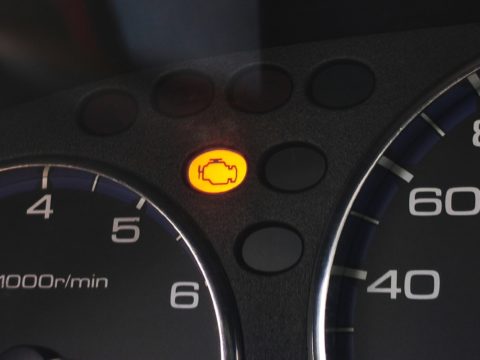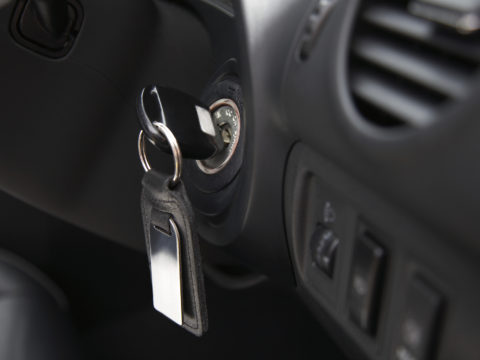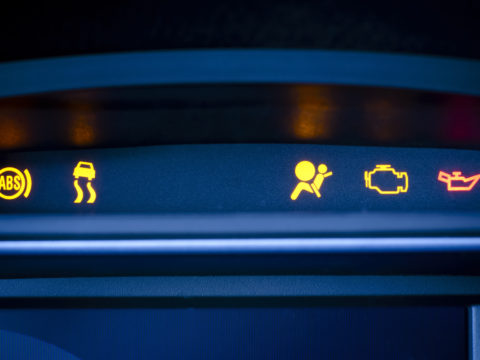Does your Chevy Silverado’s climate control have a mind of its own? Are you constantly adjusting the temperature or fan speed? If so, you’re not alone. Many Chevy Silverado owners have reported issues with their climate control system.
In this article, we’ll explore some of the most common problems with the Chevy Silverado climate control system and provide some tips and fixes to help you get it back to working as it should.

Contents
Climate Control Module Overview
The Chevy Silverado climate control module is essential to the truck’s climate control system. It regulates and maintains the vehicle’s interior temperature by controlling the air conditioning, heating, defrosting, and ventilation settings.
The module is located in the dashboard and can be programmed to adjust the temperature and airflow according to the driver’s preferences. The system also has sensors that detect changes in the cabin temperature and adjust the settings automatically.
Understanding how the module works and how to troubleshoot any issues is crucial to maintaining a comfortable and safe environment in the vehicle.
Problem Diagnosis
Accurately diagnosing issues with your Chevy Silverado’s climate control system is crucial before making any repairs. Examining the climate control system is the logical first step in identifying potential issues.
But how can you do this? Here are some ways to diagnose problems with your Chevy Silverado’s climate control system.
Visual Inspection
Begin by conducting a thorough visual inspection of your vehicle’s climate control components. Check for any visible damage or wear on wires, connectors, and other system parts. Ensure that all connections are secure and free from corrosion or debris.
Checking Fuses and Relays
Faulty fuses or relays could be responsible for climate control issues in your Silverado. Locate the fuse box under the hood or inside the cabin (refer to your owner’s manual if needed), then check each fuse related to HVAC systems using a multimeter. Replace any blown fuses as necessary.
Note: Always use replacement fuses with matching amperage ratings.
Scanning for Trouble Codes
A diagnostic scan tool can help identify specific error codes associated with malfunctioning components within your vehicle’s climate control system. Plug an OBD-II scanner into the port beneath your dashboard (usually near the steering column).
Follow instructions provided by the scanner manufacturer to read stored trouble codes; these may point directly toward faulty sensors or modules requiring attention.
Testing Sensors and Actuators
If your diagnostic scan tool indicates a specific sensor or actuator problem, you must test these components individually.
For example, if an issue is detected with the ambient temperature sensor, use a multimeter to check its resistance values against manufacturer specifications (found in repair manuals).
Similarly, test blend door actuators for proper operation by observing their movement when adjusting climate control settings.
Consulting Repair Manuals and Online Resources
When diagnosing Chevy Silverado climate control problems, it’s helpful to consult repair manuals such as those from Haynes or Chilton, which provide detailed information on system components and troubleshooting procedures.
Additionally, online forums like SilveradoSierra.com and other automotive websites can offer valuable insights from fellow Silverado owners who have encountered similar issues.

Common Problems With the Silverado AC Module
The Chevy Silverado’s climate control module is designed to provide comfort and convenience to passengers, but like any other vehicle component, it is prone to issues over time.
Below are some typical problems you may encounter with the Silverado’s AC module:
Blowing Hot Air
One of the most common problems with the Silverado AC module is blowing hot air instead of cool air. This can happen for various reasons, such as a faulty compressor, a refrigerant leak, or a clogged air filter.
Sometimes, the issue may be as simple as low refrigerant levels.
Weak Airflow
If the airflow from your Silverado’s AC vents is weak, it may be due to a clogged air filter, a broken fan, or a damaged blower motor.
It can also be a sign of a refrigerant leak, which can cause the AC system to malfunction.
Strange Smells
If you notice strange smells coming from your Silverado’s AC vents, it could be due to mold or mildew growth inside the system.
This can happen if the AC system is not used frequently or if the cabin has a moisture buildup. Sometimes, the smell may be due to a leak in the refrigerant lines.
AC Compressor Failure
The AC compressor compresses the refrigerant and circulates it through the AC system. If it fails, you may notice a lack of cool air, strange noises, or a burning smell.
AC compressor failure can happen for various reasons, such as refrigerant leaks, electrical issues, or normal wear and tear.
Electrical Problems
The Silverado’s AC module is an electronic system that can face various electrical problems, such as blown fuses, malfunctioning sensors, or damaged wiring.
If your AC system is not working correctly, it may be due to an electrical issue that needs to be diagnosed and repaired by a qualified technician.
Causes
To effectively diagnose and address climate control issues in your Chevy Silverado, it’s essential to understand their common causes. Here are the four primary reasons that may lead to climate control malfunctions:
Electrical Issues
Electrical issues are among the most common causes of climate control problems in a Silverado. This can include blown fuses, damaged wiring, or faulty sensors.
Suppose there is a problem with the electrical components of the climate control system. In that case, it may not function correctly, leading to erratic temperature control or a malfunctioning blower fan.
Refrigerant Leaks
Refrigerant leaks are another frequent reason for climate control problems in a Silverado. Your Silverado’s air conditioning system depends on a specific quantity of refrigerant to cool the air before distributing it throughout the cabin.
If there is a leak in the system, the refrigerant levels will drop, causing the AC to blow warm or hot air instead of cold.
Malfunctioning Blower Fan
The blower fan in your Silverado is responsible for circulating air throughout the cabin, and a malfunctioning fan can lead to issues with the climate control system.
If the fan isn’t working correctly, the air may not circulate correctly, leading to uneven temperatures or weak airflow issues.
Clogged Air Filters
The air filters in your Silverado’s climate control system help to keep the air circulating through the cabin clean and free of contaminants.
If these filters become clogged, they can impede airflow and lead to issues such as weak airflow or uneven temperatures.
How Do You Reset Chevy Silverado Climate Control Module?
Resetting the Chevy Silverado’s climate control module can help resolve various issues, such as malfunctioning temperature controls, incorrect fan speed, or problems with air distribution. If you’re experiencing any of these issues, here’s how you can reset the module:
Step 1: Turn Off Your Vehicle
First, turn off your Chevy Silverado’s engine and remove the key from the ignition. This will ensure that the climate control module is completely shut down.
Step 2: Disconnect the Battery
Next, you need to disconnect the battery. Locate the negative battery cable, usually black, with a minus (-) sign. Use a wrench or pliers to loosen the nut and disconnect the cable.
Step 3: Wait for 30 Minutes
After disconnecting the battery, you must wait at least 30 minutes. This will give enough time for the climate control module to reset completely.
Step 4: Reconnect the Battery
Once the 30 minutes have passed, reconnect the negative battery cable to its original position and tighten the nut with a wrench or pliers. This will restore power to the climate control module.
If any issues arise or further queries exist, it is recommended to consult a trained technician for expert guidance.
When to See a Mechanic
While some issues can be resolved through simple troubleshooting or resetting the module, others may require expert assistance for proper diagnosis and repair.
Persistent Issues After Resetting the Module
If you’ve followed the steps to reset your Chevy Silverado climate control module and are still encountering issues, this could indicate an underlying problem that requires further investigation by a qualified technician.
Inability to Identify the Problem
In cases where you cannot pinpoint the cause of your climate control problems, seeking help from a professional is recommended. A skilled mechanic will have access to specialized diagnostic tools and expertise in identifying potential issues within your vehicle’s HVAC system.
Complex Repairs or Replacements Needed
Certain repairs or replacements may necessitate specialized knowledge and equipment beyond what most DIY enthusiasts possess.
For example, if there is damage within your vehicle’s wiring harness or other electrical components related to the climate control system, consulting with an experienced technician is crucial for ensuring safe and effective repairs.
Recurring Problems Despite Previous Repairs
If you continue to experience the same problem with your vehicle, even after previous repairs, it’s time to see a mechanic.
Recurring problems may indicate an underlying issue that requires professional attention to ensure your vehicle is safe and running correctly.














